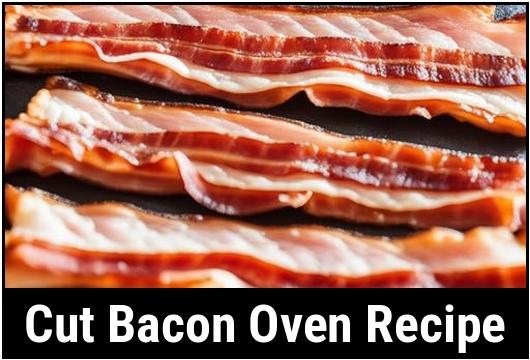
The Ultimate Guide To Perfectly Crispy Oven-Baked Bacon
Bacon is a beloved breakfast staple loved for its crispy texture and savory flavor. While traditionally cooked in a skillet on the stovetop, cooking bacon in the oven has gained popularity for its convenience and consistency. In this article, we’ll delve into the science behind cooking bacon in the oven, explore the best ingredients to use, discuss the preparation process, and provide a detailed recipe for achieving perfectly cooked cut bacon in the oven.
Food Science Of Cooking Cut Bacon In An Oven
Cooking bacon in the oven offers several advantages over traditional stovetop methods. The oven provides a more even and consistent heat distribution, which helps to cook the bacon evenly and prevents it from curling or burning in spots. Additionally, cooking bacon in the oven allows for larger batches to be cooked simultaneously, making it an efficient option for feeding a crowd.
When bacon is cooked in the oven, the fat renders out slowly, resulting in a crispy texture while preserving the meatiness of the bacon. The high heat of the oven helps to caramelize the sugars in the bacon, enhancing its flavor and creating a deliciously crisp exterior.
Choosing Ingredients
Selecting the right ingredients is essential for achieving the best results when cooking bacon in the oven. Here are some tips for choosing the best ingredients:
Bacon
- Choose high-quality bacon with a good balance of fat and meat. Look for bacon that is not too fatty, as excess fat can cause flare-ups in the oven.
- Consider the thickness of the bacon slices. Thicker slices will take longer to cook and may result in a chewier texture, while thinner slices will cook more quickly and become crispier.
Seasonings
- While bacon is flavorful on its own, you can enhance its taste by adding seasonings such as black pepper, garlic powder, or smoked paprika before cooking.
Preparing Ingredients
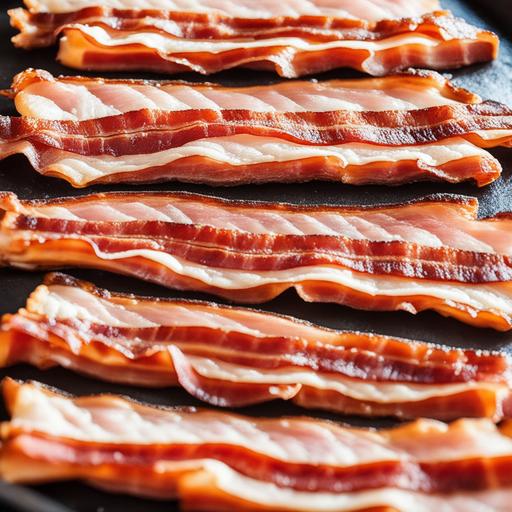
Properly preparing the ingredients is crucial for ensuring that the bacon cooks evenly and develops the desired texture. Here’s how to prepare the ingredients for cooking bacon in the oven:
Bacon
- Remove the bacon from the packaging and separate the slices.
- If desired, season the bacon with your choice of spices or seasonings.
- Arrange the bacon slices in a single layer on a baking sheet lined with parchment paper or aluminum foil. Leave a small space between each slice to allow for air circulation.
Oven
- Preheat the oven to the optimal cooking temperature for bacon, which is typically around 400°F (200°C). Preheating the oven ensures that the bacon cooks evenly and develops a crispy texture.
- Position the oven rack in the center of the oven to ensure even cooking.
Optimal Oven Cooking Temperature & Timing
Cooking bacon in the oven requires careful attention to temperature and timing to achieve the perfect balance of crispiness and tenderness. Here are some guidelines for the optimal oven cooking temperature and timing for bacon:
Temperature
- The optimal oven temperature for cooking bacon is around 400°F (200°C). This high heat helps to render the fat quickly and crisp up the bacon evenly.
- Cooking bacon at lower temperatures may result in greasy, chewy bacon, while cooking at higher temperatures may cause the bacon to burn or become overly crispy.
Timing
- The cooking time for bacon in the oven typically ranges from 15 to 20 minutes, depending on the thickness of the bacon slices and desired crispiness.
- Thicker slices of bacon will require longer cooking times, while thinner slices will cook more quickly.
- It’s essential to keep a close eye on the bacon during the final minutes of cooking to prevent it from burning.
Cut Bacon Oven Recipe
Now that we’ve covered the science behind cooking bacon in the oven and the best ingredients and preparation methods, let’s dive into a detailed recipe for making cut bacon in the oven:
Ingredients
- 1 pound (450g) of cut bacon slices
- Optional seasonings: black pepper, garlic powder, smoked paprika
Instructions
- Preheat the oven to 400°F (200°C) and line a baking sheet with parchment paper or aluminum foil.
- Remove the bacon slices from the packaging and arrange them in a single layer on the prepared baking sheet. Leave a small space between each slice to allow for even cooking.
- If desired, sprinkle the bacon slices with your choice of seasonings, such as black pepper, garlic powder, or smoked paprika.
- Place the baking sheet in the preheated oven and cook the bacon for 15 to 20 minutes, or until it reaches your desired level of crispiness.
- Keep a close eye on the bacon during the final minutes of cooking to prevent it from burning.
- Once the bacon is cooked to perfection, remove the baking sheet from the oven and transfer the bacon slices to a plate lined with paper towels to drain any excess grease.
- Serve the crispy oven-cooked bacon alongside your favorite breakfast dishes or use it as a delicious topping for salads, sandwiches, or soups.
Cooking bacon in the oven is a convenient and efficient way to achieve perfectly crispy and flavorful bacon every time. By understanding the science behind oven cooking, choosing the best ingredients, and following the proper preparation and cooking techniques, you can enjoy delicious oven-cooked bacon that will impress even the most discerning breakfast enthusiasts. So next time you’re craving crispy bacon, skip the stovetop and fire up the oven for a hassle-free cooking experience that yields delicious results.
Doneness Checks
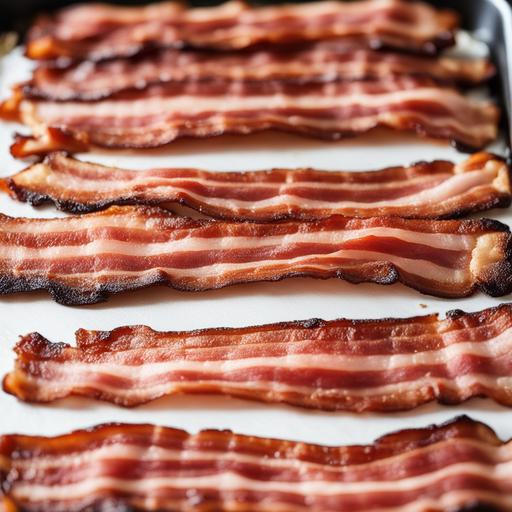
Cooking bacon in the oven is a straightforward process that yields consistently delicious results. To begin, preheat your oven to 400°F (200°C) and line a baking sheet with parchment paper or aluminum foil for easy cleanup. Then, arrange the bacon slices in a single layer on the baking sheet, ensuring that they do not overlap. This allows the bacon to cook evenly and ensures that each slice becomes crispy and golden brown.
Determining the doneness of bacon is crucial for achieving the perfect balance of crispiness and chewiness. Here are a few methods for checking the doneness of oven-baked bacon:
Visual Inspection
One of the simplest ways to check if bacon is done is by visually inspecting it. Fully cooked bacon will be a rich golden brown color and will appear crispy. Keep an eye on the edges, as they tend to cook faster than the center.
Texture Test
Gently touch the bacon with a pair of tongs or a fork. Fully cooked bacon should feel firm and crispy, with no soft or rubbery spots. If the bacon still feels flimsy or limp, it likely needs more time in the oven.
Internal Temperature
For precise doneness, use an instant-read meat thermometer to check the internal temperature of the bacon. Fully cooked bacon should register at least 165°F (74°C). Insert the thermometer into the thickest part of the bacon slice to ensure an accurate reading.
Undercooking
Undercooked bacon can be unappetizing and potentially unsafe to eat. Here are some common reasons why bacon may be undercooked in the oven:
Oven Temperature
If the oven temperature is too low, the bacon will take longer to cook and may not reach the desired level of crispiness. Make sure to preheat your oven to the correct temperature before adding the bacon.
Overcrowding
Placing too many bacon slices on the baking sheet can prevent proper airflow and result in uneven cooking. Make sure to arrange the bacon in a single layer with some space between each slice to allow for adequate heat circulation.
Thick-Cut Bacon
Thick-cut bacon requires longer cooking times to become fully cooked and crispy. If you’re using thick-cut bacon, consider increasing the cooking time or adjusting the oven temperature slightly higher to ensure thorough cooking.
Overcooking
While crispy bacon is delicious, overcooking can result in burnt, bitter-tasting bacon. Here are some tips for preventing overcooked bacon:
Monitoring
Keep a close eye on the bacon while it’s cooking to prevent it from becoming overly crispy or burnt. Check the bacon periodically and remove it from the oven as soon as it reaches your desired level of doneness.
Lowering Oven Temperature
If you find that your bacon is consistently overcooked, try lowering the oven temperature slightly. This allows the bacon to cook more slowly and evenly, reducing the risk of burning.
Adjusting Cooking Time
Experiment with different cooking times to find the perfect balance of crispiness and chewiness. Keep track of how long it takes for the bacon to reach your desired level of doneness and adjust the cooking time accordingly.
Troubleshooting
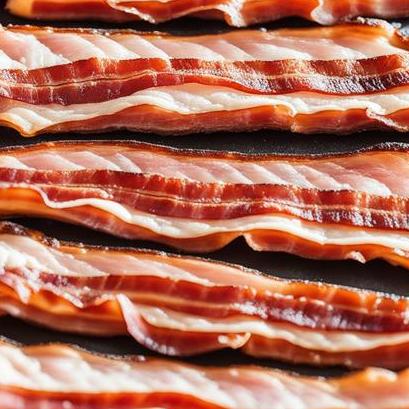
Despite your best efforts, you may encounter some issues when cooking bacon in the oven. Here are some common problems and how to troubleshoot them:
Uneven Cooking
If some pieces of bacon are cooking faster than others, rotate the baking sheet halfway through the cooking process. This ensures that all the bacon slices cook evenly and prevents some from becoming burnt while others remain undercooked.
Bacon Sticking To The Pan
To prevent bacon from sticking to the baking sheet, line it with parchment paper or aluminum foil. Alternatively, you can lightly grease the baking sheet with cooking spray or oil before adding the bacon.
Grease Splattering
Bacon contains a high amount of fat, which can cause grease to splatter in the oven and create a mess. To minimize splattering, place a wire rack on top of the baking sheet and arrange the bacon slices on the rack. This allows the excess grease to drip off the bacon as it cooks, resulting in crispier and less greasy bacon.
Recipe Variations
Once you’ve mastered the basics of oven-baked bacon, you can get creative with different flavor combinations and recipe variations. Here are some ideas to inspire you:
Maple Glazed Bacon
Brush bacon slices with maple syrup before baking for a sweet and savory flavor combination. The maple syrup caramelizes in the oven, creating a deliciously sticky glaze.
Spicy Jalapeño Bacon
Sprinkle bacon slices with finely chopped jalapeños before baking for a spicy kick. The heat from the jalapeños adds depth of flavor to the bacon and pairs well with eggs or sandwiches.
Brown Sugar Bacon
Coat bacon slices with brown sugar before baking for a sweet and crunchy treat. The brown sugar caramelizes in the oven, creating a candied coating that balances the saltiness of the bacon.
Cooking bacon in the oven is a convenient and hassle-free way to enjoy crispy, flavorful bacon without the mess of stovetop cooking. By following these tips and techniques, you can achieve perfectly cooked bacon every time. Experiment with different flavors and recipe variations to customize your bacon to suit your taste preferences. Whether you prefer classic crispy bacon or want to try something new, oven-baked bacon is sure to satisfy your cravings.
Flavour Enhancement Tips
Oven-baked bacon offers a hassle-free cooking experience with minimal cleanup, making it an attractive option for home cooks. By utilizing the oven’s even heat distribution, bacon cooks uniformly, resulting in crispy, golden-brown slices. Additionally, baking bacon allows the fat to render slowly, leading to a crispier texture without the risk of burning.
-
Marinade or Seasoning: Before baking, consider marinating or seasoning the bacon to enhance its flavor profile. Common marinades include maple syrup, brown sugar, or a blend of herbs and spices. Allow the bacon to marinate for at least 30 minutes to infuse it with maximum flavor.
-
Adding Aromatics: To impart depth of flavor, place aromatics such as garlic cloves, thyme sprigs, or rosemary branches on the baking sheet alongside the bacon. As the bacon cooks, these aromatics release their essential oils, infusing the bacon with a subtle fragrance.
-
Glazing: For a sweet and savory twist, brush the bacon with a glaze halfway through the cooking process. Popular glaze options include honey, balsamic vinegar reduction, or a mixture of mustard and brown sugar. The glaze caramelizes as the bacon bakes, creating a delectable crust.
Texture Enhancement Tips
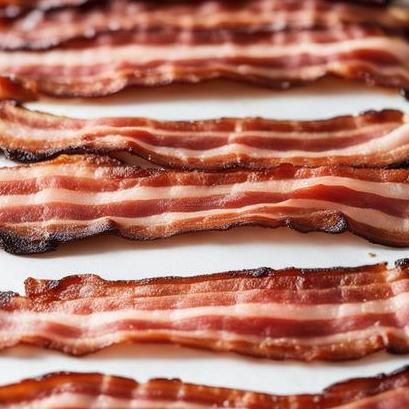
-
Rack Placement: Elevating the bacon on a wire rack placed on the baking sheet allows hot air to circulate evenly around each slice. This prevents the bacon from sitting in its rendered fat, resulting in a crisper texture.
-
Par-cooking: If you prefer chewier bacon, consider par-cooking it in the microwave for a few minutes before transferring it to the oven. This initial cooking step jumpstarts the rendering process, ensuring the bacon cooks evenly without becoming too crispy.
-
Basting: Periodically basting the bacon with its rendered fat using a basting brush promotes even cooking and adds moisture to prevent it from drying out. This technique is particularly useful when baking thicker cuts of bacon.
Cooking At Different Temperatures
-
Low and Slow: Baking bacon at a lower temperature, around 325°F (163°C), allows the fat to render slowly, resulting in a tender texture with crispy edges. This method is ideal for thick-cut bacon or when cooking a large batch.
-
High Heat: For ultra-crispy bacon in a shorter amount of time, increase the oven temperature to 400°F (204°C) or higher. Keep a close eye on the bacon to prevent it from burning, as it can go from perfectly crispy to charred quickly at high temperatures.
-
Experimentation: Don’t be afraid to experiment with different temperatures to achieve your desired texture and crispiness level. Keep notes on the results each time to fine-tune your baking technique.
Cooking Tips
-
Preheating the Oven: Always preheat the oven before baking bacon to ensure even cooking and consistent results. This allows the bacon to start cooking immediately, preventing it from becoming soggy as it waits for the oven to reach the desired temperature.
-
Arrangement: Arrange the bacon slices in a single layer on the baking sheet, ensuring they do not overlap. This allows for even cooking and prevents the slices from sticking together.
-
Monitoring: Keep a close eye on the bacon as it cooks, especially during the final minutes, to prevent it from overcooking or burning. The cooking time can vary depending on factors such as the thickness of the bacon and the oven temperature.
Serving Suggestions
-
Breakfast Classics: Serve oven-baked bacon alongside scrambled eggs, pancakes, or French toast for a classic breakfast spread.
-
Salads and Sandwiches: Crumble crispy bacon over salads or layer it in sandwiches for an added crunch and burst of flavor.
-
Appetizers: Wrap bacon around dates, water chestnuts, or asparagus spears and bake until crispy for irresistible appetizers.
-
Incorporate into Recipes: Use chopped bacon as a flavorful addition to soups, stews, pasta dishes, or even baked goods like biscuits and cornbread.
Conclusion
Mastering the art of cooking bacon in the oven elevates this humble ingredient to new heights. By following the tips and techniques outlined in this guide, you can achieve perfectly cooked bacon with enhanced flavor and texture every time. Whether you prefer it crispy and caramelized or tender and chewy, oven-baked bacon offers endless possibilities for culinary creativity. Experiment with different flavors, temperatures, and serving ideas to make this kitchen staple truly shine in your cooking repertoire.
FAQS
What Is A Cut Bacon Oven Recipe?
A cut bacon oven recipe is a cooking method that involves baking bacon in the oven instead of frying it in a pan.
What Are The Advantages Of Using The Oven To Cook Bacon?
Cooking bacon in the oven has several advantages, including less mess, even cooking, and the ability to cook large batches of bacon at once.
How Do I Prepare The Bacon For The Cut Bacon Oven Recipe?
To prepare bacon for the oven, you should start by preheating the oven to the desired temperature, lining a baking sheet with parchment paper, and arranging the bacon strips on the sheet with a little space between each one.
What Temperature Should I Set My Oven For The Cut Bacon Oven Recipe?
The oven should be preheated to 400 degrees Fahrenheit for the cut bacon oven recipe.
How Long Should I Bake The Bacon In The Oven For The Cut Bacon Oven Recipe?
It typically takes around 15-20 minutes to bake bacon in the oven, depending on the thickness of the bacon and how crispy you like it. Keep a close eye on it to make sure it doesn’t burn.


